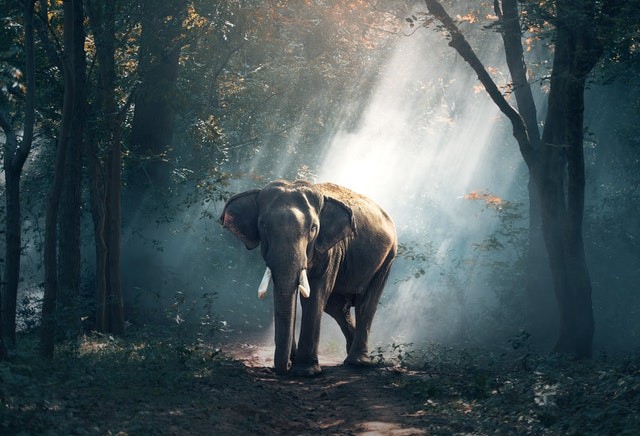A new study released in Nature Communication suggests that over-hunting by increasing human populations following their entrance into the Americas was not the main factor leading to the extinction of the largest animals in North America.
Rather, the study suggests that based on the new statistical modeling method, the populations of rge animals in North America were reduced due to climate change, leading to a radical decrease of temperatures around 13,000 years ago. This commenced the decline and extinction of these large mammals.

Max Planck Extreme Event Research Group
Humans may have a hand in the extinction of large animals in more complicated and indirect ways than what the they believe. Prior to 10,000 years ago, North America was home to many large creatures, such as sloths, mammoths, beavers, and glyptodons. On the contrary, most of the animals weighing over 44kg in North America 10,000 years ago, also called megafauna, had vanished.
Scientists from the Max Planck Extreme Event Research Group in Jena, Germany, wanted to look out for what led to the extinction of these animals. The theme has been deeply debated for decades, with most scientists arguing that overhunting by humans and Climate change was responsible. With the use of a new statistical modeling method, the researchers found strong proof that climate change was the main factor leading to the extinction.
ALSO READ: 5 Endangered Animals that Won the Battle Against Extinction
Overhunting Against Climate Change
It has been hypothesized since the 1960's as humans grow and expand in populations across the continents, the advent of specialized hunters in the Americas around 14,000 years ago rapidly took many giant animals to extinction. The giant animals did not acquire the proper anti-predator behaviors needed to deal with a novel and highly social predator, and this made them easy to hunt.
According to advocates of this "overhunting hypothesis," humans took full dominance of easy-to-hunt animals, destroying the animal populations and recklessly driving the giant animals to extinction. However, not everyone supports this idea. Many researchers have argued that evidence to support the idea that megafauna hunting was tenacious or boundless enough to cause extinction is not enough. Instead, climatic and ecological changes may have been the cause.

Extinction Of North America's Megafauna
Between 15,000 and 12,000 years ago, which is around the time of the extinction, there were two notable climatic changes. The first happened 14,700 years ago during a period of abrupt warming, and the second was a cold snap that occurred 12,000 years ago at a time when the Northern Hemisphere was restored to near-glacial conditions.
According to Mathew Stewart, a co-lead author of the study, it was made known that new findings show that megafauna populations swung in response to climate change."Megafauna populations appear to have been rising as North American began to warm around 14,700 years ago, but we then see an alteration in this trend around 12,900 years ago as North America began to drastically cool, and shortly after this we begin to see the extinction of megafauna take place."
RELATED ARTICLES: The Merits of Using DNA to Revive Extinct Animals and Plants
For more news, update, about large animals and other related stories don't forget to follow Nature world News!
© 2025 NatureWorldNews.com All rights reserved. Do not reproduce without permission.





